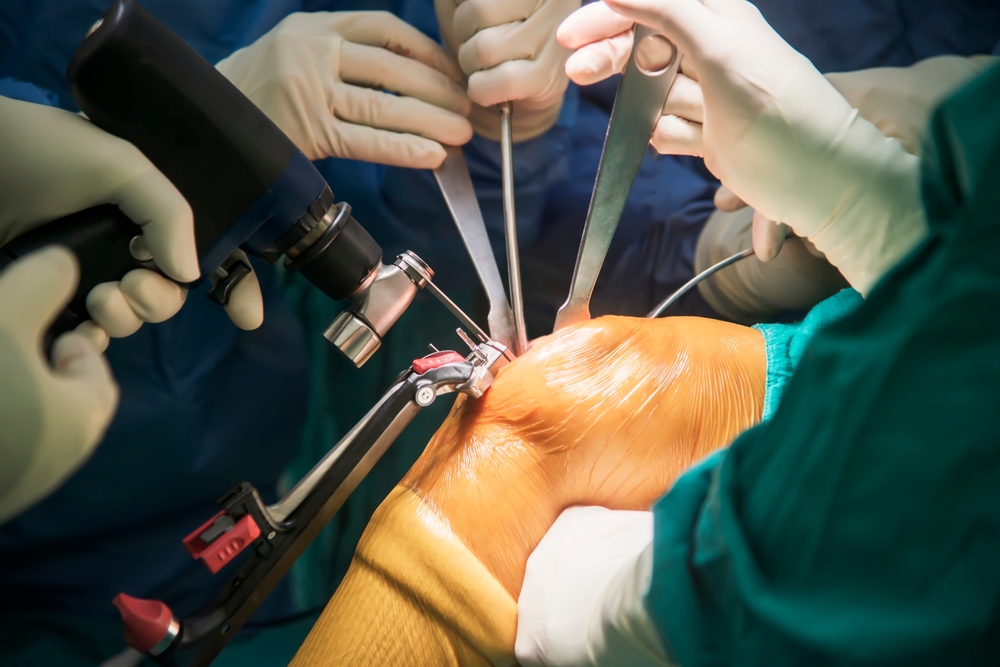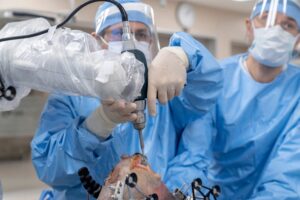While talking about knee replacement surgery, patients today have more options than ever before. Traditional knee replacement surgery has long been the standard of care, but recent advancements in technology have introduced robotic-assisted techniques as an alternative approach. Both methods aim to alleviate pain, improve joint function, and improve the quality of life for individuals suffering from severe knee arthritis or injury. This blog aims to explore the key differences between robotic knee replacement surgery and traditional knee replacement methods, analyzing their respective benefits, outcomes, and considerations to help patients make informed decisions about their treatment options.
Traditional Knee Replacement Surgery: Time-Tested Method
Overview:
Traditional knee replacement surgery, also known as conventional or manual knee replacement, has been performed successfully for decades. In this approach, the orthopaedic surgeon uses manual instruments and visual estimation to perform the procedure.
Procedure:
During traditional knee replacement surgery, the surgeon makes an incision over the knee to access the damaged joint. The surgeon then removes the damaged cartilage and bone, prepares the remaining bone surfaces, and implants the prosthetic components (including the femoral, tibial, and sometimes patellar components) to replace the damaged joint surfaces. The alignment and positioning of these components are crucial for the success of the surgery, relying on the surgeon’s skill and experience.
Benefits:
- Proven Track Record: Traditional knee replacement surgery has a long history of successful outcomes and reliability.
- Widely Available: Most orthopaedic surgeons are trained in traditional knee replacement techniques, making it readily accessible for patients.
Considerations:
- Accuracy: While surgeons strive for precision, there can be variability in manual techniques, potentially affecting implant alignment and longevity.
- Recovery: Recovery time can vary, and rehabilitation is crucial to regain strength and mobility post-surgery.
Robotic Knee Replacement Surgery: Precision Guided by Technology
Overview:
Robotic knee replacement surgery represents a technological leap forward in the field of orthopaedics. This approach integrates advanced robotic systems to assist the surgeon with precise planning and execution of the procedure.
Procedure:
Before surgery, detailed imaging such as CT scans creates a 3D model of the patient’s knee joint. This model guides the surgeon in planning the optimal placement and alignment of the prosthetic components. During surgery, the robotic system provides real-time feedback and guidance, allowing the surgeon to make minute adjustments with high precision. This ensures optimal implant positioning and alignment based on the patient’s unique anatomy.
Benefits:
- Improved Precision: Robotic systems offer sub-millimetre accuracy, potentially improving the longevity and function of the artificial joint.
- Personalized Treatment: Each surgery is tailored to fit the patient’s specific anatomy, optimizing joint mechanics and stability.
- Minimally Invasive: Robotic-assisted techniques often result in smaller incisions, less trauma to surrounding tissues, reduced blood loss, and potentially faster recovery times.
Considerations:
- Cost: Initial costs for robotic systems may be higher compared to traditional methods, though long-term benefits may outweigh this.
- Availability: Robotic systems may not be universally available at all hospitals or surgical centres.
Which is Better: Making an Informed Choice
Factors to Consider
- Patient-specific Needs: Consider your health, age, activity level, and expectations for surgery outcomes.
- Surgeon’s Expertise: The experience and skill of your orthopaedic surgeon are critical, regardless of the technique used.
- Technology Accessibility: Evaluate whether robotic-assisted surgery is available and recommended based on your specific case.
Conclusion
The choice between robotic knee replacement surgery and traditional knee replacement methods depends on various factors, including patient preferences, surgeon recommendations, and technological accessibility. Both approaches have demonstrated success in improving joint function and quality of life for patients with severe knee arthritis or injury. Ultimately, consulting with a qualified orthopaedic surgeon, such as Dr. Shivam Shah in Vadodara, who specializes in both traditional and robotic-assisted knee replacement surgeries, can provide valuable insights and guidance tailored to your individual needs. For more information about knee replacement surgery options or to schedule a consultation with Dr. Shivam Shah, at Sunshine Global Hospital for Knee Pain Hospital. Take the next step toward a pain-free future and improved mobility—trust Dr Shivam Shah for expert care in knee replacement surgery in Vadodara.


